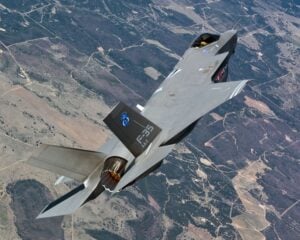McCain Lays Down Law On F-35 Bulk Buy; Kendall Says It Works
Posted on

CORRECTS: State of Sen. Angus King To Maine.
CAPITOL HILL: Sen. John McCain does not want the Pentagon to put together a so-called bulk buy of F-35s, decrying the program’s repeated failures over the last 15 years.
McCain, citing his status as taxpayer watchdog, said during today’s Senate Armed Service Committee’s hearing on the F-35 that no program had ever been bought in a multiyear deal before it was approved for full production.
So, after the hearing. reporters gathered round Frank Kendall, the head of Pentagon acquisition, who first floated the idea of a bulk buy almost a year ago. The U.S. and Joint Strike Fighter program international partners would procure up to 450 F-35s over three years, with 150 bought each year. While they won’t try for a bulk buy this year, Kendall was firm that the approach made sense for the Pentagon and for the taxpayer.
“Given that we are going to keep buying these warplanes, we should buy them as cheaply as we can,” Kendall told me.
Gen. Chris Bogdan, head of the Joint Strike Fighter program, added that “a block buy is less risky from a government standpoint than a multiyear” because a multiyear requires a contract specifying exactly how many aircraft you plan to buy, while the bulk buy carries with it no termination liability. Bottom line, though, Bogdan asked: “If you can save $2.5 billion and there’s very little risk, why wouldn’t you do this?”
Perhaps the most significant issue facing the program over the next two years lies with something that has dogged it for at least a year, since Air Force Maj. Gen. Jeffrey Harrigian, head of F-35 integration, told me in his first interview about it: It’s development of the mission data files or “threat library.” The data on missile launches, frequencies, opponents’ weapons and their sensors come from the Intelligence Community (IC). The Office of Secretary of Defense’s Intelligence Mission Data Center gathers the data from across the IC. Then the $300 million United States Reprogramming Laboratory at Nellis Air Force Base turns that information into threat data for all three versions of the F-35, as well as for its international partners. (That lab will be joined by three more over the next few years, Bogdan said this afternoon.)
This looks like a case where someone simply goofed. “Despite a $45 Million budget provided to the Program Office in FY13, the required equipment was not ordered in time and the USRL is still not configured properly to build and optimize Block 3F Mission Data Files (MDFs). The program still has not designed, contracted for, and ordered all of the required equipment – a process that will take at least two years for some of the complex equipment – after which significant time for installation and check-out will be required,” Michael Gilmore, the head of Operational Testing and Evaluation, said in prepared testimony. When I asked him about this, Bogdan confirmed the situation: “He is right that we didn’t buy this in time.”
Does this really matter? Yes. Gilmore put it simply in his written testimony: “If the situation with the USRL is not rectified, U.S. F-35 forces will be at substantial risk of failure (emphasis added) if used in combat against these threats.”
CORRECTION Finally, Kendall told Alaska Maine Sen. Angus King during the hearing that there wasn’t a great chance of the Navy and Air Force developing an aircraft together any time soon, as happened with the F-35. Both services are in the early stages of developing sixth generation fighters.
“We’re now thinking about the follow-on aircraft for the Navy and the Air Force, and I don’t think we’re going to repeat this [joint acquisition],” Frank Kendall said. “The design parameters are going to be quite different for the follow-on aircraft of the two services. We did get some benefit from the commonality, but there’s very little commonality in the [airframe] structure,” Kendall said.
At the same time, Kendall told King that the Pentagon “could still get some of those benefits without having to have a single program,” by building cockpits and sensors with a great deal of commonality.
Subscribe to our newsletter
Promotions, new products and sales. Directly to your inbox.
